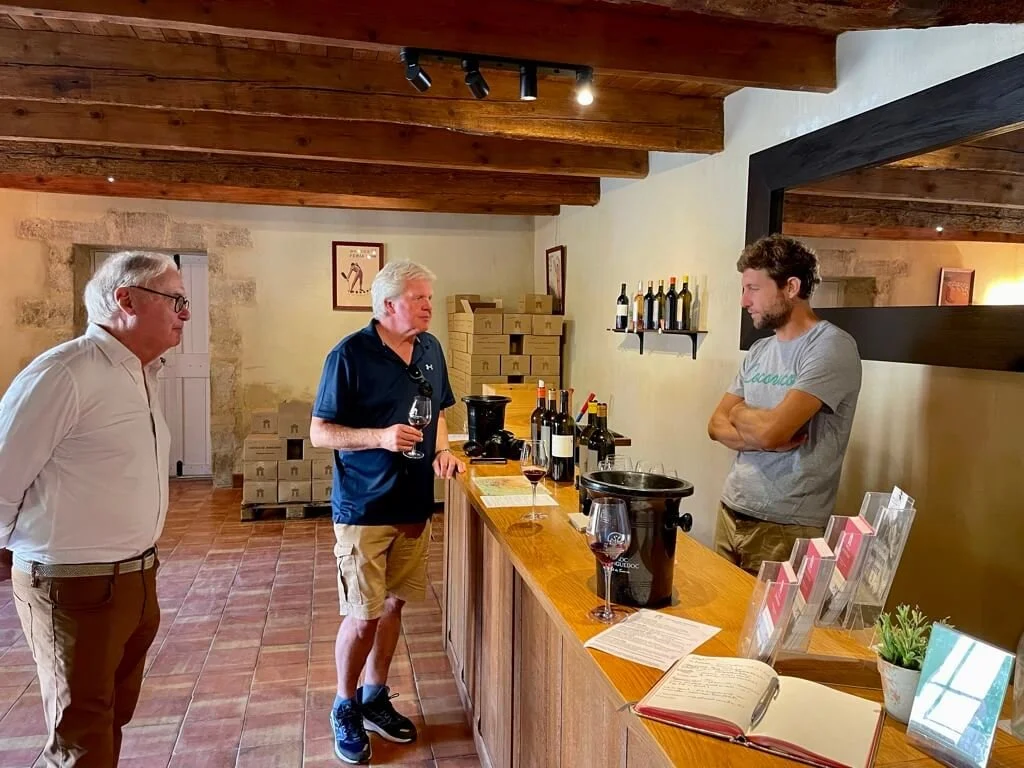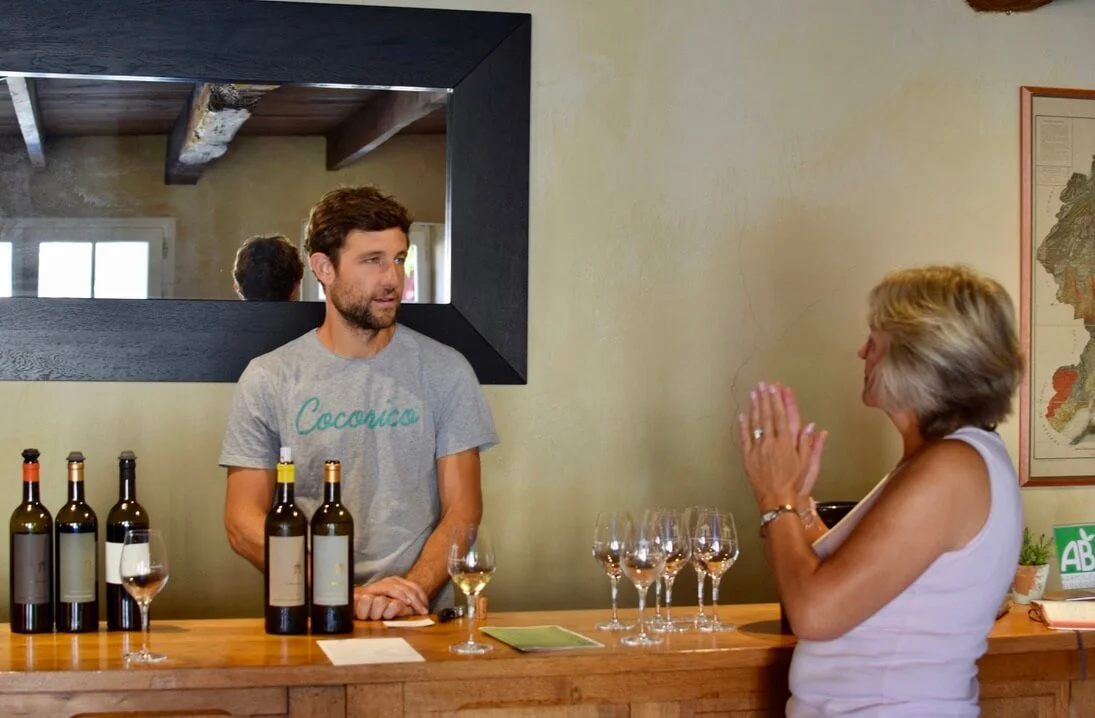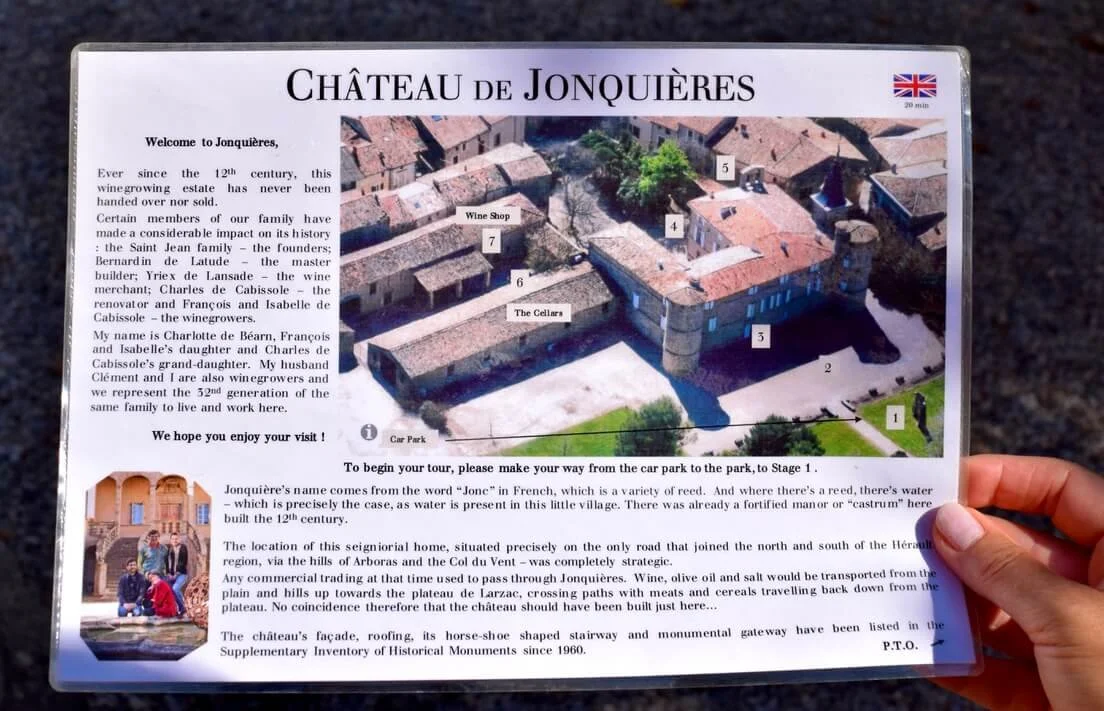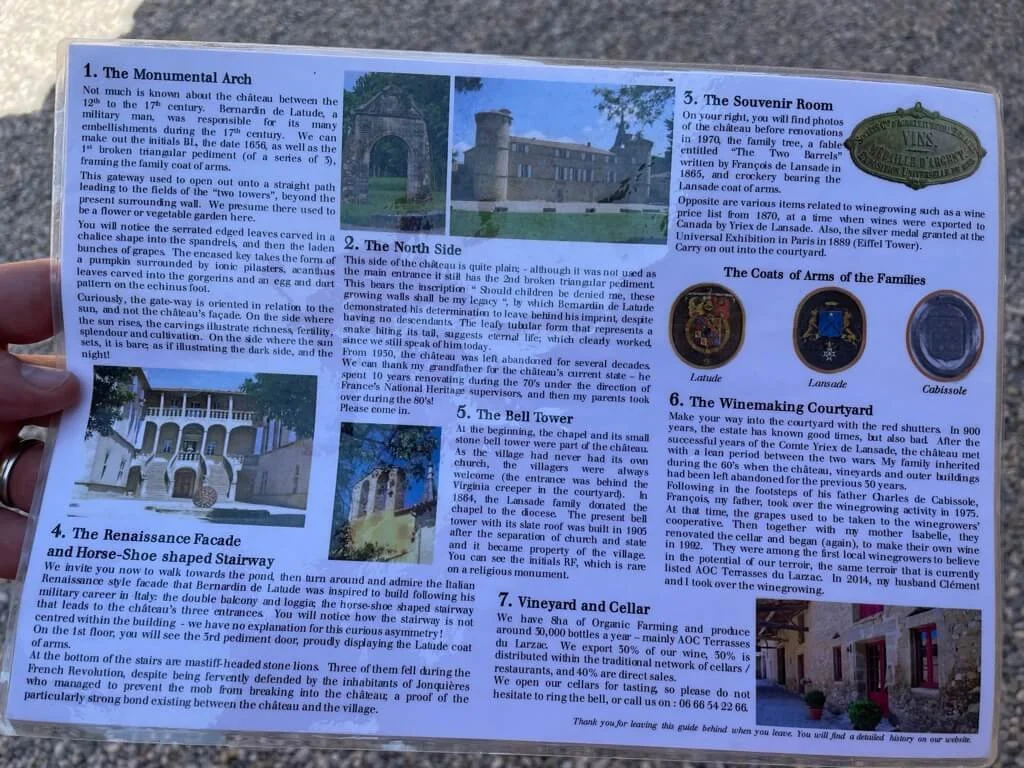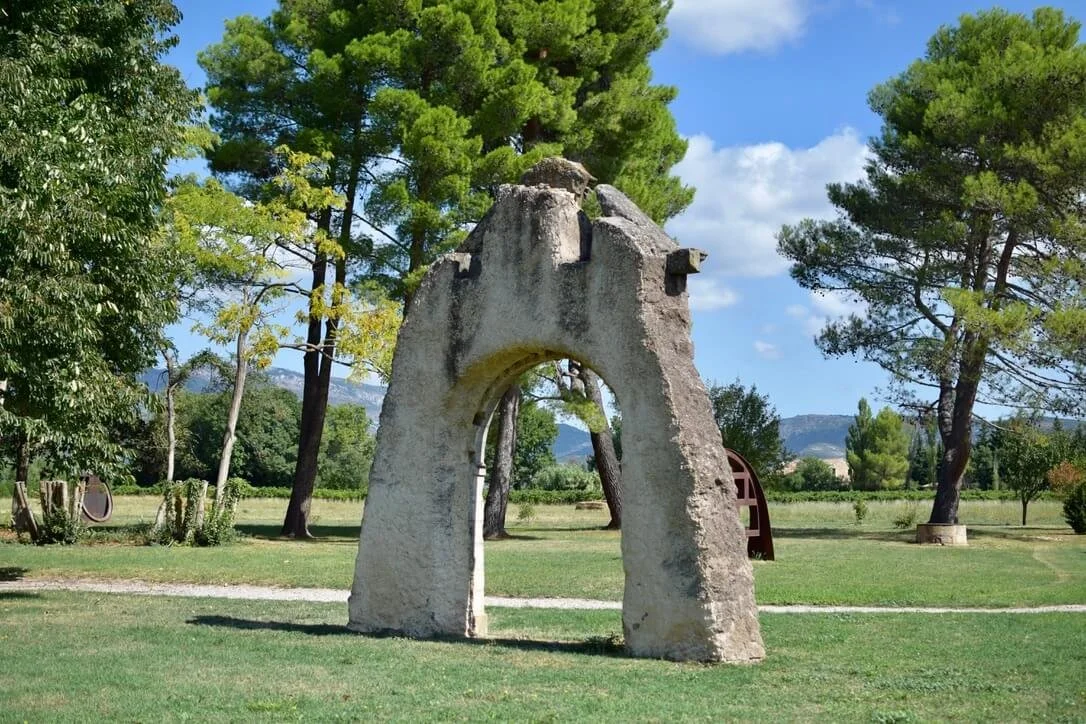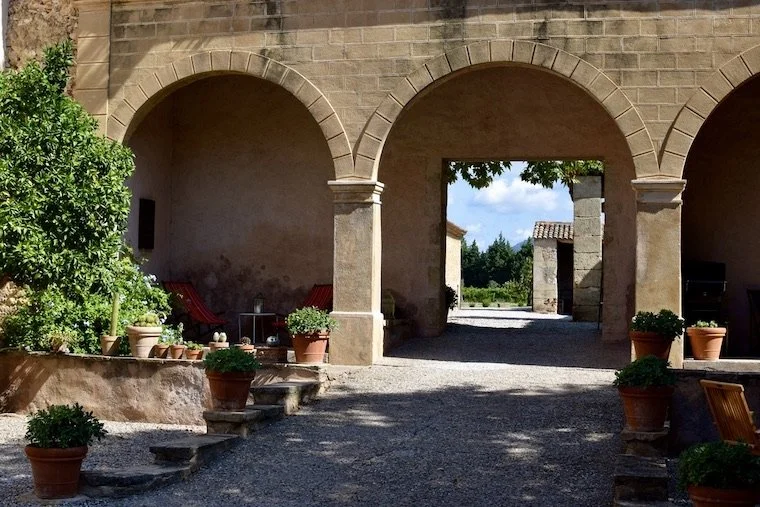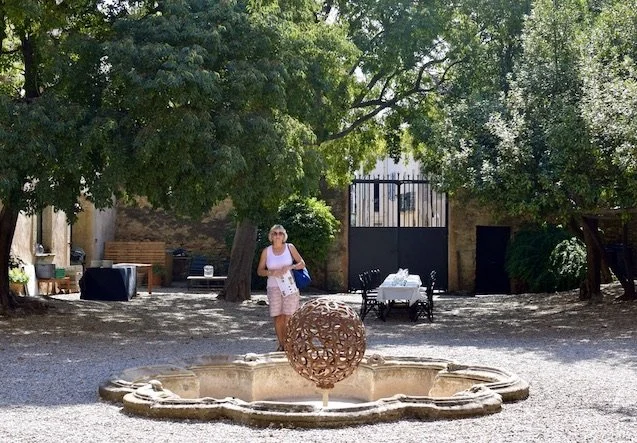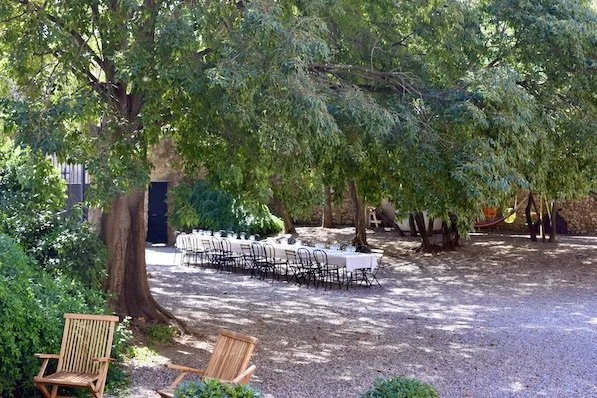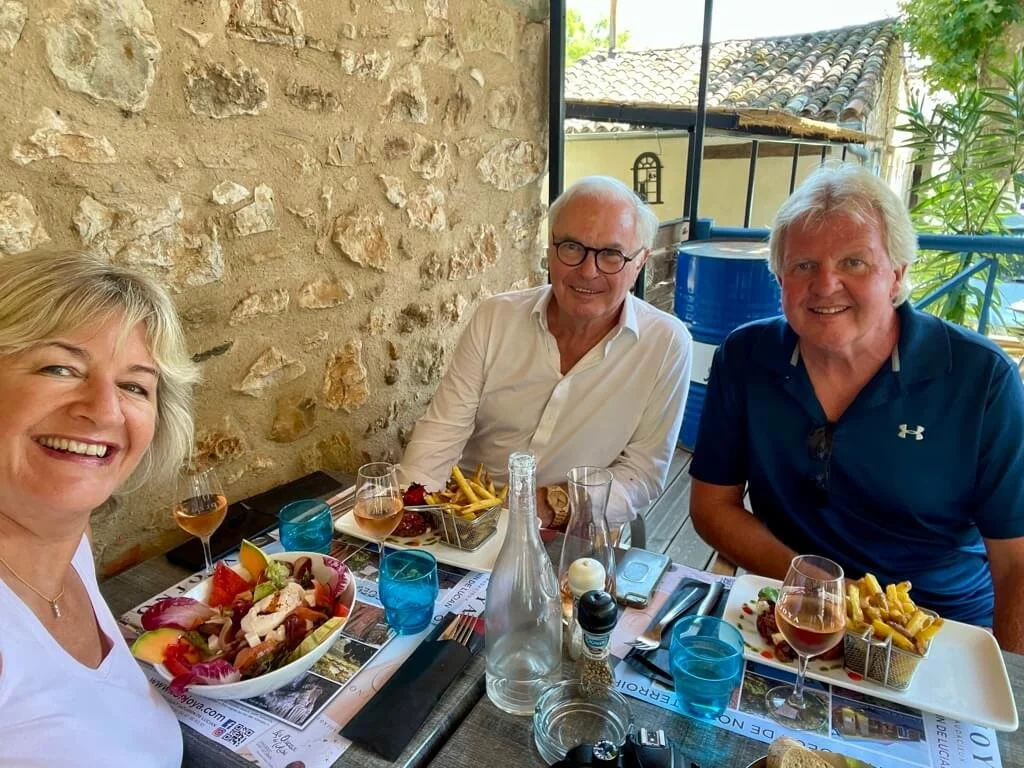Discover Chateau de Jonquieres-Terrasses du Larzac
Chateau Jonquières, Terrasses du Larzac region - Source: Wine Keller
Read about our visit to the stunning Château de Jonquières in Terrasses du Larzac - one of the more recent appellations of the Languedoc wine region
Whilst on a recent French road trip, travelling through to Spain, we met up with a friend from Montpellier in south-west France, who offered to take us to visit a wonderful winery and wine tourism destination, Château de Jonquières, in the Terrasses du Larzac appellation - part of the beautiful Languedoc wine region.
Keen anyway to explore more of the Eastern Languedoc, we were delighted to have the opportunity to experience a new region and its wines, Terrasses du Larzac and to find out more about Château de Jonquières, the oldest family wine estate in Languedoc.
Read on to see what we discovered!
(Note, we also visited the neighbouring wine region Pic Saint Loup during our trip - see here to read about what we discovered here!)
The Languedoc wine region - Eastern Languedoc
Typical Terrasses du Larzac vineyards in Eastern Languedoc
Southern France’s ‘Languedoc-Roussillon’ wine region is the largest and most varied wine region in France and Languedoc Rousillon wines include a huge range of styles.
The Eastern Languedoc sub-region covers the département of Hérault and stretches from close to the Spanish border in the west near Béziers, to Nîmes in the East, where it borders with the Rhône Valley wine region.
This sub region is also very varied. In general it is warmer and drier than the Western Languedoc, however, different micro-climates exist across the region, affecting the style of the different wines produced.
The main city in the Eastern Languedoc is Montpellier, a fast-growing metropolis some 10km from the Mediterranean and today France’s eighth largest city. Vines compete with the demand for real-estate in this popular part of south-west France, where some of the best beaches in Languedoc are to be found and popular seaside resorts such as Sète, la Grande Motte and Cap d’Agde.
Eastern Languedoc wines and appellations
The regional ‘Languedoc’ appellation dominates wine production, consisting of mostly red wines and Syrah, Mourvèdre and Grenache blends. Many producers choose however to produce wines outside of the core appellations, to offer more flexibility. Instead they produce varietal wines under the IGP classification, or Pays d’Oc (covering the broader Languedoc-Roussillon area) or simply, Vins de France.
The other important Eastern Languedoc appellations include:
Faugères in the extreme west where the lack of soil produces low yields of highly distinctive red, rosé and white wines;
Picpoul de Pinet, close to the coast, near Sète, which produces very popular white wines, made from the lemon-scented, old southern France grape variety, Picpoul, which thrives in the sandy soils here;
Terrasses du Larzac, in the northern part of Eastern Languedoc, a fairly new appellation producing low yields, as with Faugères, from the mixed limestone/clay/shingle soils;
Pic St Loup, another fairly new appellation named after the dramatic rock formation in the area, producing some really elegant and refined wines, resulting from a slightly cooler and wetter climate.
Eastern Languedoc, although dominated by red wines, is producing increasingly noteworthy white wines, through blending a variety of grapes including Grenache blanc, Clairette, Picpoul, Roussanne, Marsanne, Clairette, Viognier and Vermentino (also known as Rolle).
Terrasses du Larzac wines
The Terrasses du Larzac appellation was founded in 2014. The region lies in the north of Eastern Languedoc and extends across 32 districts from just north of Montpellier and the town of Clermont-l’Hérault up into the foothills of the Cévennes mountains. Its natural, northern boundary is the impressive 800m high limestone plateau, Causse du Larzac, which helps to create the region’s unique climate and its special wines. Vines are planted on terraces below the plateau at an average of 80-150m and a maximum of 400m.
This part of the Languedoc experiences the greatest contrasts in day and night temperatures. Its distance from the sea and the effects of the high Causse du Larzac plateau brings relatively cool air down to the vineyard terraces on summer nights. This helps slow down the ripening of the grapes and creates superb freshness in the wines.
The Terrasses du Larzac soils are quite varied: sandy, clay soil packed with stones, limestone marl and terraces of pebbles and similar to in Pic St Loup, grape yields are relatively low here.
Only red wines are produced, made from Syrah, Grenache and Mourvèdre. Cinsault and Carignan can also be blended, but to a maximum of 30%. A blend of at least two grape varieties is required.
Terrasses du Larzac wines are typically full-bodied and age-worthy with lots of freshness and character.
Visit to Château de Jonquières
Our friend from Montpellier recommended we visit Château de Jonquières in AOC Terrasses du Larzac as he knew we would not only enjoy the wines, we would love to see what the oldest family wine estate in Languedoc offered in terms of wine tourism - and we weren’t disappointed!
The magnificent 17th century gateway in the Château de Jonquières park - Source: Wine Keller
Some background about Château de Jonquières
Château de Jonquières is one of the oldest, family wine estates in the Languedoc wine region, having been in the same family since the 12th century! François de Cabissole and his wife Isabelle were responsible for renovating the winery and started producing their own wines in 1992 (formerly the grapes were sent to the local cooperative). They were also one of the first winegrowers to produce wines under the new AOC Terrasses du Larzac.
The vineyards and wine making are now managed by daughter and son-in-law Charlotte and Clément de Béarn, taking over in 2014. We spent time with Clément during our visit when he introduced us to a selection of Château de Jonquières wines and shared with us their passion, for not only continuing the traditions and legacy of this beautiful estate, but introducing new ideas and winemaking innovation.
Château de Jonquières vineyards
The estate covers approximately 14 hectares with 8 hectares under vine. Organic farming and winemaking processes are followed and the wines are certified organic. Red grapes include Carignan, Cinsault, Syrah, Grenache and Mourvèdre and white grapes, Chenin blanc and Grenache blanc.
Château de Jonquières wines
The range of Château de Jonquières wines includes the ‘Lansade’ white, red and rosé and the ‘Baronnie’ white and red (both reds are AOC Terrasses du Larzac). Each year Charlotte and Clément also produce a wine under the name ‘White Label’, different each year and a reflection of their passion to innovate and experiment. These ‘white label’ wines are not likely to be AOC Terrasses du Larzac wines, providing the opportunity to be more flexible and creative with winemaking.
Clément took us through a guided tasting of both the Lansade and Baronnie ranges which we found to be excellent, as well as the 2020 ‘white label’ wine, based on 100% Carignan grapes and a ‘Vin de France’ wine. This was a really interesting wine, with great acidity and one which Clément is exceptionally proud of.
Château de Jonquières and wine tourism
Wine tourism is a very important aspect of the Château de Jonquières estate, welcoming people to visit and experience one of the oldest family wine estates in the Languedoc.
Aspects of the estate have been listed as ‘historic monuments’ since 1960, including the château’s Renaissance façade, the roofing and the horseshoe-shaped stairway as well as the 17th century gateway in the park, which today forms the estate’s logo.
Château de Jonquières accommodation
Château de Jonquières is able to accommodate 8-10 guests, in 4 guest rooms. All rooms are traditionally and classically furnished with beautiful views over the 2 hectare park. In keeping with the traditional style, there are no televisions - and no lifts. With a setting like this it’s hard to see how you’d miss a television! It really is idyllic. There is also a large outdoor swimming pool to enjoy.
Château de Jonquières estate tours and wine tasting
Château de Jonquières is open for guided tours and self-guided tours from April-October. We followed a self-guided tour and enjoyed exploring the beautiful park, buildings, monuments and courtyards and learning about the château’s long and fascinating history.
Gourmet Odyssey partner for wine experiences in Languedoc
Château de Jonquières is partnered with Gourmet Odyssey to provide wine gifts and wine experiences, enabling people to ‘adopt vines’ in Languedoc and experience the life of wine grower and wine maker! When we visited in September, a group of vine owners were actually visiting and were very busy and involved in the vineyard!
Where to find Château de Jonquières
Château de Jonquières is located in the village of Jonquières, just 30 minutes from Montpellier, in the departement of Hérault.
What to see and do around Château de Jonquières
Following our wine visit at Château de Jonquières we drove a few minutes to the delightful nearby village of St Saturnin de Lucien, where we enjoyed a wonderful lunch at a restaurant called Le Pressoir, which we can thoroughly recommend!
For other suggestions about what to see and do and restaurants in the vicinity around Château de Jonquières, see here.
Other Terrasses du Larzac wineries
Other notable wineries to visit in Terrasses du Larzac include: Mas des Brousses; Domaine des Grecaux; Domaine de Montcalmès
Additional tips and information for visiting Eastern Languedoc
Getting to the Languedoc wine region and Eastern Languedoc
Eastern Languedoc is well served in terms of transportation links. TGV trains link Montpellier with Paris, via Lyon and there are airports at Béziers, Nimes, Montpellier, Carcassonne and Perpignan.
There are excellent motorway links north to south via Lyon and the A7 or further towards the west - and a route we prefer, due to the wonderful scenery and less crowded roads - via Orléans, Bourges and Clermont-Ferrand and the A75 leading you directly to Montpellier.
Things to see in Montpellier
The main city in Eastern Languedoc is Montpellier - a thriving modern city in the Hérault, with a historic centre. There’s lots to do in Montpellier for the wine tourist and it’s really well located, with great transport links and lots of wineries to visit nearby!
It also has its own fabulous wine and food scene to enjoy, with an abundance of places to enjoy wonderful food and sample the Languedoc wines of course!
Head to the heart of Montpellier and its famous Place de la Comédie - one of the largest pedestrian precincts in Europe, dominated by the Opéra Comédie. Here you can also pick up your Montpellier City Card, available in 24h, 48h, or 72h options, at the tourism office.
Explore the bustling medieval streets and alleyways in the historic centre, perhaps enjoy some retail therapy as well as take in some of Montpellier’s art scene. Head to the Musée Fabre, a well-curated art museum founded by Montpellier-based painter François-Xavier Fabre back in 1825.
Place de la Comédie Montpellier
The Arc de Triomphe & old town - Monpellier
Also make sure to visit the city’s Arc de Triomphe, or Porte du Peyrou and walk through to the Promenade du Peyrou for breathtaking panoramic views of the surrounding areas. With beautiful beaches just 10km outside of the city, you can combine a tour of Montpellier with a swim in the Mediterranean too, which can’t be bad!
Visit the official Montpellier tourism website for lots more ideas and information about where to visit, stay and eat!
The Eastern Languedoc coast - some of the best beaches in Languedoc
In addition to exploring the many wineries of Eastern Languedoc, make time to explore its beaches, seaside marinas and small Mediterranean ports. There are miles of sandy beaches, which can get crowded in the popular summer months, but they are certainly worth visiting!
Down in the far west of the region is one of the main resorts, Cap d'Agde, well known for its large naturist beaches, and close to the lovely town of Agde. The popular seaside resort of La Grande-Motte is at the eastern end of the coastal region, a resort designed in the 1970's and pretty much unchanged since. Here you can visit the resort of Palavas-les-Flots, one of the most visited seaside resorts in the region.
The old port, Sète
Etang de Thau beaches
Visit the historic fishing port of Sète
We would really recommend you visit the historic fishing and trading port of Sète. It is the largest fishing port on the French Mediterranean coast and is also a vibrant place to visit and explore! The town is set between the Mediterranean and a lagoon called the Etang de Thau and consists of two parts - the low town, with the port, and criss-crossed by canals and bridges; and the high town on Mont St Clair. In the low town, the harbour front houses, canals and the fishing activity itself are the main attractions, along with the lovely 'village within a town' - the Pointe Courte sector. Sète is known locally as the ‘Venice of Languedoc’ and the months of June-August are a great time to visit when the town stages its 'Joutes de Sète' a jousting tournament from boats rather than horseback.
12 km of beaches stretch west of Sète - a thin strip of sand separating the sea from the Thau lagoon - well worth visiting!
Explore the Cévennes Mountains
North of Pic St Loup, it’s worth spending time to visit the Cévennes National Park, a vast area of beautiful, unspoiled, rural France. The largest part of the park falls in the Languedoc-Rousillon region - in the departments of Lozère and Gard - and there are several mountains and high plateaus including Mont Lozère, Mont Aigoual and the Causse Méjean.
The Cévennes National Park
The Gorges du Tarn
Discover the Gorges du Tarn
Also north of Eastern Languedoc and reached via the A75 motorway are the famous Gorges du Tarn. Following the course of the Tarn River for 50 kilometres, the Tarn Gorges are among the deepest gorges to be found anywhere in Europe. They are also extremely picturesque - one of the most scenic parts of France - and offer several great vantage points from where to enjoy their beauty.
Visit Nîmes
In the far east of the eastern Languedoc lies the historic Roman city of Nîmes, capital city of the Gard department and home to the finest Roman remains in France. Visit the famous ‘arène de Nîmes’ - the best conserved Roman amphitheatre in the world and although 2000 years old, still used for events today. This is one of three large Roman amphitheatres in the south of France.
Also a must to see in Nîmes, is Maison Carrée, the best preserved Roman temple anywhere in the world. Take time to explore this beautiful city’s incredible history and wander through its lovely old town and ancient city centre.
Learn more about visiting the Herault department and Languedoc-Roussillon.
The Ampitheatre in Nîmes
The Maison Carrée in Nîmes
Conclusion
Château de Jonquières is a beautiful place to visit - and we can imagine it would be fantastic to actually stay there and spend more time enjoying the château and the grounds. We had a wonderful wine tasting and really enjoyed these fabulous, organic wines. Visiting here and getting to discover Terrasses du Larzac has only reinforced our love of the Languedoc wine region and the incredible opportunities it offers for wine lovers and wine tourists!



